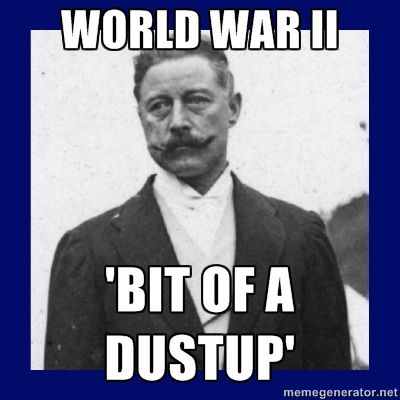Word Nerd: 4 cool figures of speech that you must use
20 Aug
In the ancient Greco-Roman civilization, being a citizen of means meant having a strong grasp of three subjects: logic, grammar, and rhetoric.
Rhetoric meant the art of persuasion. While it was easy to understand why it was an important subject in a time where senators were becoming more important than generals (Julius Caesar), rhetoric remains important today even though it is no longer taught in a majority of schools.
Most of us have come across the phrase: “That’s a rhetorical question.” Nowadays, we associate rhetoric with political speeches or sales jargon – with insincerity in short. But, rhetoric in its true form is language composed with the intention to persuade. In that context, rhetorical devices and figures of speech remain as much of a necessity as ever!
 Understatement – the way the English do it.
Understatement – the way the English do it.
Here are four figures of speech/ rhetorical devices that were popular in the times of Caesar, in the times of Shakespeare, and are popular even today!
1. Alliteration: Ever twisted your tongue with “She sells seashells by the seashore”? That’s an example. Alliteration is used to emphasize a part of the speech or text (think marketing copy and mottos), it’s used to infuse rhythm in the sentences, and for comedic effect (think of the repetition of c’s in a sentence).
2. Oxymoron: This device pairs opposites to create drama. Think of phrases like ‘big baby’ or ‘open secret.’ Oxymorons make language interesting (sometimes poetic, at other times funny). They create drama for the reader or listener. They’re literary spectacles!
3. Asyndeton: ‘I came. I saw. I conquered’ is a great example of the device. In this style, the writer or speaker omits conjunctions between words, phrases and clauses in order to create a certain rhythm and focus the meaning. For example, if Caesar had said, ‘I came and I saw; then I conquered’ – history would not have been half as impressed.
4. Understatement: This is an art that is commonly associated with the English. It involves presenting a thing or quality as less important or good than it is. For example: ‘The streets are in floods and all he said was “There was a bit of a sprinkle last night.”’
Understatement can add elegance and charm as well as humour to your language.
Are there any rhetorical devices that you are interested in using or that you like to use? Let us know!

No comments yet